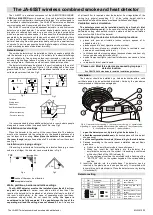
48
Glossary
EN
15. Glossary
Apnea
A cessation of external respiration lasting at least
10 seconds is called a respiratory cessation or apnea.
The apnea is usually ended by a waking reaction of the
body. This interrupts sleep and reduces its recovery
function.
A distinction is made between obstructive apneas in which
respiration is prevented by an obstruction of the upper
airways and central apneas in which the respiratory drive
fails.
CPAP
CPAP therapy is for treating obstructive sleep apnea
syndrome. CPAP stands for Continuous Positive Airway
Pressure, i.e. the patient is continuously supplied with
respiratory air at a constant slight pressure whilst asleep.
This is generally performed using a nasal cannula or full-
face mask. This "pneumatic bracing" is used to keep the
airways open and to prevent the occurrence of apneas,
hypopneas, flow limitations and snoring.
Cheyne-Stokes breathing
Cheyne-Stokes breathing is a special form of central apnea
and is characterized by periodic phases of increasing and
decreasing respiratory volumes and consecutive
respiratory pauses (apnea).
During phases of decreasing respiratory volume, breathing
is supported by increasing the difference between
inspiratory and expiratory pressure levels. In the case of
increasing volume, respiratory support is suspended.





































